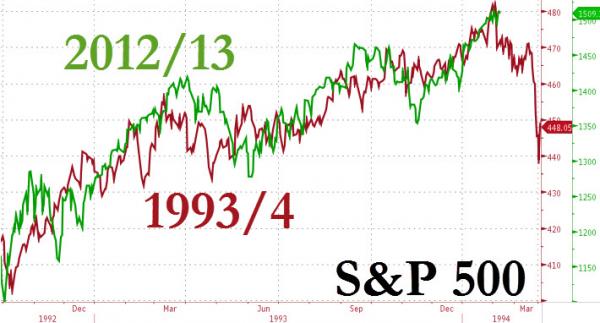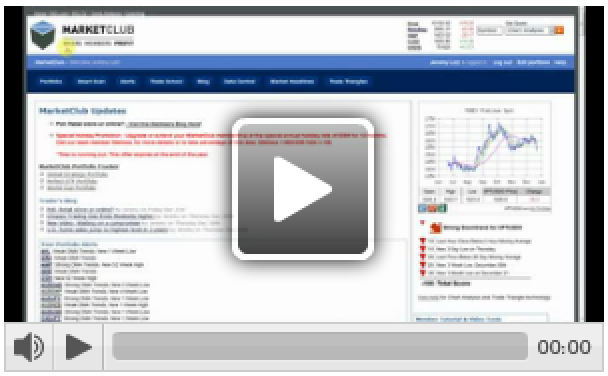“Up and Away in My Beautiful Balloon” (Nic Colas)
 Printer-friendly Version
Printer-friendly Version
« EBAY INC (EBAY) NASDAQ – Feb 08, 2013 (SIA Daily Stock Report) ~|~
Tweet
Email This Article

Up and Away in My Beautiful Balloon
by Nic Colas, BNY ConvergEx Group
My newly-turned-85-year old mother recently informed me that she is “Having a bit of a middle age crisis.” Since English is not her first language, I tried to tell her that this particular turn of phrase was usually reserved for people turning 40 or perhaps 50 years of age. The typical symptoms are a desire to trade in the family car for a convertible. In its more virulent form, that urge extends to trading in the first spouse for a newer, flashier model. For my mom, it seemed to signal an uncertainty about whether to start knitting another scarf, or go all-out and begin working on a sweater. I talked her off the ledge – we settled on a Rastaman-style knit cap. Crisis averted, at least for now. I just hope she doesn’t expect me to wear it.
Still, the urge to use large round numbers as an excuse for some navel-staring is a common one; consider the attention around the 14,000 level for the Dow Jones Industrial Average. Most institutional investors benchmark themselves against the S&P 500, which closed Friday at a distinctly non-large-round number of 1513. Still, the Dow is the longest running measure of the performance for U.S. stocks. Started in 1896 with 12 constituents and formed by adding stock prices together, it essentially the financial equivalent of an aging movie star who still makes headlines when they take an eighth husband or go into rehab for the umpteenth time.
So let’s use the Dow’s crossing of the Rubicon of the 14,000 level to consider both how we’ve gotten here and ponder the way forward. Three topics fall readily to hand:
#1 – Equity prices are now much more a tool of central bank policy than in past economic cycles. Consider the “Traditional” equity market storyboard that defined the start of every economic upturn over the last 30 years. It begins with a slowdown in economic activity and the customary Federal Reserve response to lower interest rates. This tends to jump-start bank lending in the mortgage and auto markets, since the Fed has effectively lowered the cost of money to the banking system. Over time, homebuilders and auto assembly/parts plants add more workers, and the unemployment rate begins to decline. While these sectors of the economy are relatively small, the incremental activity here sparks demand in other sectors. This virtuous circle feeds on itself and the domestic economy begins a period of lasting expansion.
This cycle has followed that path, but at a much more sluggish rate as both the financial sector and consumers try to reduce their debt loads. House prices have apparently bottomed, but excess supply of foreclosures means new construction is still distinctly sub-par. Auto demand has finally returned to “Normal,” but that’s come a full six years after the downturn. Previously cycles have been more like 4-5 years from trough to normal.
You don’t need to be tinfoil-hat conspiracy theorist to appreciate that the Federal Reserve’s liquidity measures – Quantitative Easing I, II, III and IV – have pushed capital into the equity market. With interest rates still in the 2.0% neighborhood for 10 year Treasuries, thanks to the Fed’s bond purchases, where else would you expect capital to flow? I am sure the Federal Open Market Committee understands this shift and welcomes the possibility that rising equity prices will spur some “Wealth effect” spending.
Less well appreciated is that the Fed’s policies also, intentionally or not, dampen volatility. It seems no coincidence that Dow 14,000 and CBOE VIX 12.9 are very comfortable bedfellows. The “Fear Index” could just as easily be called the “Confidence about the predictability of the future Index,” although it’s certainly not as catchy a moniker. Equity market participants clearly understand now that the Fed is solidly on their side, even if it took a few years to receive that message.
#2 – Where’s the smart money? The “Rock star” money manager has historically been another feature of a rising stock market. The 1980s and early 1990s had “Buy what you know” Peter Lynch and “Screw the BoE” George Soros. The tech boom had countless moneymaking traders and managers printing money from Web 1.0.
In contrast, the move from the lows in March 2009 to now has relatively few poster boys and girls when it comes to the merits of active management. Many-times-burned-now shy professional managers have been cautious on this march higher. Hedge fund managers have trouble both matching market returns and maintain their historically less-correlated stance relative to equities. Mutual fund managers struggle with redemptions, which require maintaining cash levels to meet those requests while still remaining invested.
Rock star managers are, I think, an underappreciated part of building confidence in capital markets. Retail investors see a successful manager and think, “I can do that.” Institutional asset allocators can justify giving such a manager more capital, encouraging overall positive flows into stocks. Over time, those rock stars beget other well-regarded managers, trained under their tutelage. But just compare the strongly positive money flows into largely unmanaged, index tracking ETFs to the redemptions we’ve seen for years out of actively managed mutual funds. The tide may be turning here – Investment Company Institute data for the first few weeks of 2013 finally show positive flows into U.S. stock funds. Now, we just need a few opinion leading managers with great track records to come to the fore.
#3 – Now what? Over the long term, stock markets have one purpose: to reflect the prevailing opinion about corporate earnings, market-based interest rates, and macroeconomic growth. A short menu, to be sure, but any other input just ends in tears. The Fed’s liquidity actions have been a Band-Aid, yes, but not one that can stay on forever.
As I consider the way forward for U.S. stocks, I always return to Spring 1994. It was then that Alan Greenspan’s Federal Reserve started to hike rates, after a period of several years where it had kept short-term rates quite low. The 10-year U.S. Treasury had already started to move higher in yield, from 6% to 7% and eventually topping out at 8%. The S&P 500, which had begun the year around 470, tool months to bottom at 420, an 11% decline.
Yes, the U.S. economy was growing much more quickly in 1994 than it is now. Job growth, GDP expansion, car sales, house construction… It was an expansion that puts the current one to shame. Still, 1994 is a relevant – and cautionary – tale about market psychology. U.S. stock investors thought they had it all figured out as they exited 1993 – a growing economy and an accommodative Federal Reserve. Pretty much what we have now. How and when this changes – and it will change – is the challenge investors now face.
Copyright © BNY ConvergEx Group

Latest AdvisorAnalyst Stories
Read more from the author/contributor here.
Tags: Nic Colas
Posted in Markets| Comments Off







